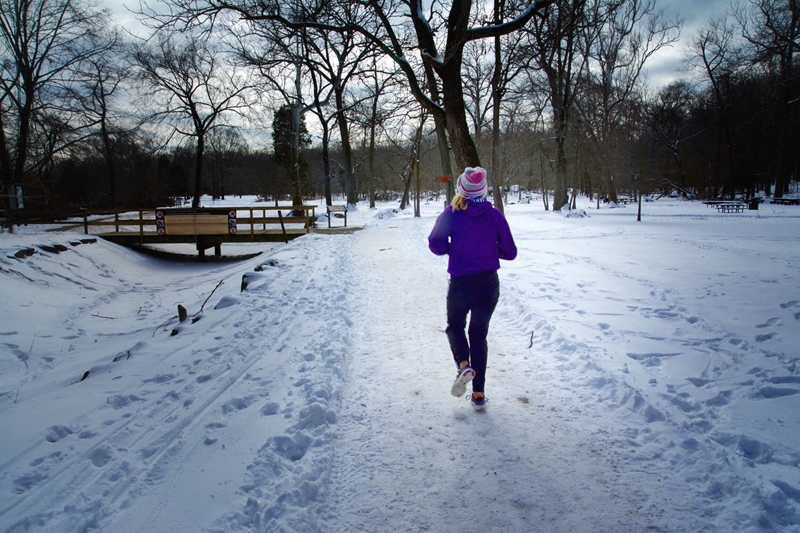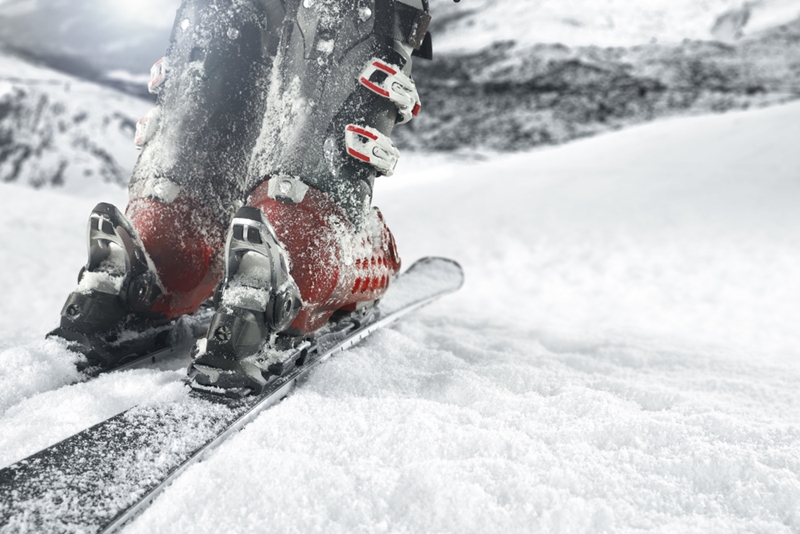Even if it's still warm where you live, now is a good time to prepare for cold weather and make sure you have your workout gear in order. Getting active in winter without taking the right precautions results in hypothermia, frostbite or other cold-related injuries. Here's how to dress for warmth when participating in outdoor winter activities, whether you're running along a trail or ice fishing:
Covering the body
Always start with a moisture-wicking base layer, as you sweat even in winter. Moisture-wicking clothing like tights and fitted tanks or t-shirts pull the sweat away from your body, keeping you warm and dry. When shopping around, look for words like moisture wick, dry and breathable. If you're savvy with a clothing care label, look for synthetic materials like polyester. Avoid cotton no matter what you do. This material absorbs moisture instead of expelling it, so you'll end up with a wet layer directly against your skin.
When checking for fit, SparkPeople noted the base layer should conform to your body. Anything too tight can restrict your movement, while clothes too loose won't pull the sweat off your skin.
 Start your winter running outfit with a lightweight, moisture-wicking base layer.
Start your winter running outfit with a lightweight, moisture-wicking base layer.
Cover this base layer with insulation like a vest, sweater, fleece sweatshirt or pullover to prevent your body heat from escaping. Fleece in particular is a favourite among outdoor enthusiasts - it's soft, lightweight and inexpensive. The insulating layer should be slightly looser than the base layer, creating a space for warm air to sit. Depending on the temperature outside, you can double up on the insulating later. Start with a thin fleece or wool sweater, then layer something heavy on top.
Next, cover with a protective layer like pants and windbreakers to block wind, rain and snow. You want this layer to be breathable yet waterproof, so look again for polyester blends. Don't choose garments made from plastic or rubber, however. These force you to sweat by trapping heat, yet they simultaneously prevent the moisture from evaporating. If you're ice fishing or otherwise in extreme cold and snow, throw on a rain bib or coverall for extra waterproofing.
Keep in mind that not all protective layers are created the same. They have varying levels of insulation based on the outside temperature, and your comfort level will change based on your physical activity. It may take a little trial and error to figure out the combination of insulation and protective layers that's right for you. If you're unsure which garments you need, come with extra layers you can easily take off rather than bring to little and suffer the cold.
 Finish with a waterproof layer to protect yourself from rain and snow.
Finish with a waterproof layer to protect yourself from rain and snow.
Accessories and extremities
It's exceptionally important to protect your head, hands and feet while exercising in winter. Start off with a thick, warm harm hat made of fleece or wool that you can pull down over your ears, and wear gloves or mittens appropriate to your activity. For example, gloves for skiing are light and flexible, while those for snowboarding have wrist guards and reinforced palms. A thin pair made of a synthetic material should do if you're running along a cold trail, but you'll need something thicker, durable and waterproof for handling snow.
On the other hand, you only need one pair of socks, regardless of whether you're running, skiing or snowshoeing. In fact, wearing multiple pairs restricts blood flow to the feet and could lead to frostbite. Instead, choose a pair of light or medium-weight wool, nylon, polyester or silk socks and cover them with thick snow boots or waterproof running shoes.
Throw on a fleece neck warmer to prevent your lungs from burning as you breathe in the cold, dry air. These trap water vapour as you exhale, which is then released into the air you inhale. If you're going to a place with harsh wind and snow, grab a ski mask and snow goggles.
Finally, use reflective vests or tape to make yourself visible in the dark. Wear sunglasses and sunscreen on sunny, snowy days, and make sure you're well hydrated before heading outside.